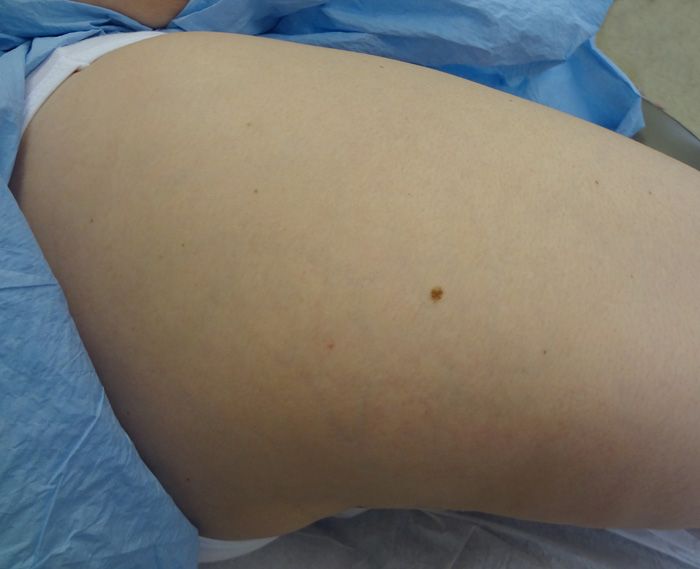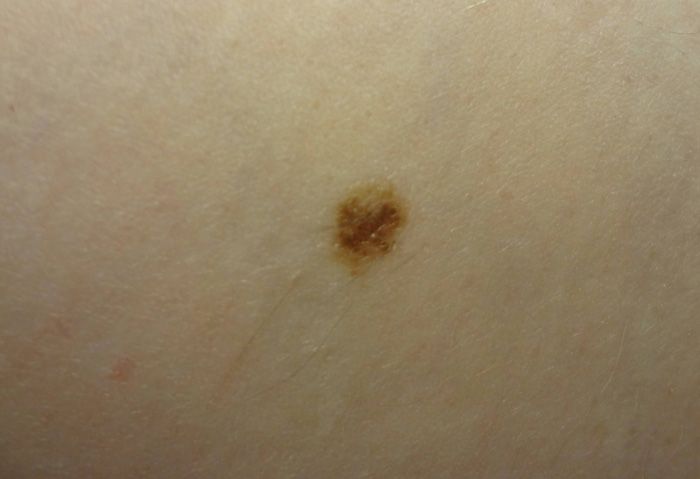Dysplastic Nevus
Consider all relevant factors when deciding what steps to take with a pigmented lesion noticed by the patient or encountered during a routine physical examination.


A 27-year-old woman noted a gradually increasing, asymptomatic dark spot on the right lateral thigh. The remainder of the cutaneous exam was normal. The patient's mother and sister had both had melanoma.
Key point: When examined closely, the lesion does demonstrate a modest degree of asymmetry and pigment irregularity. When the lesion's appearance was considered in light of the family history and the history of lesional enlargement, it was felt best to subject the patient to an excisional biopsy.
Treatment: The lesion was removed with 5-mm margins on all sides. Histology revealed a dysplastic nevus with moderate to severe cytologic atypia.
Note: It is important to consider all relevant factors when deciding what steps to take with a pigmented lesion noticed by the patient or encountered during a routine physical examination.